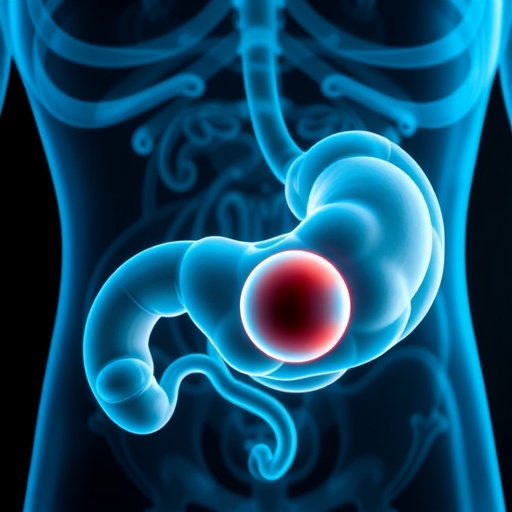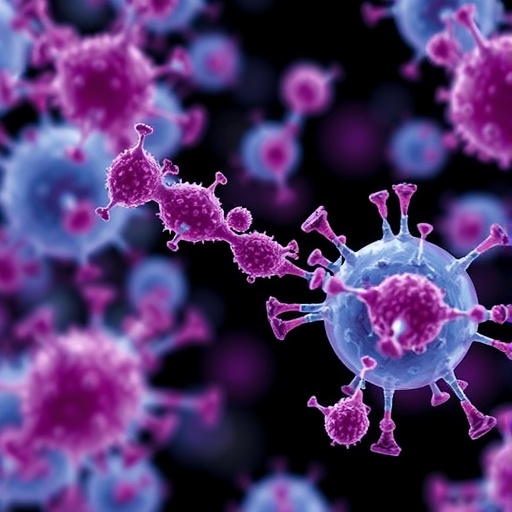The environmental ramifications of microplastics and nanoplastics (MNPs) have sparked a significant wave of research interest, as scientists seek to understand their ubiquity, origin, and impact across ecosystems. However, a notable barrier to this research is the profound inconsistency in extraction and characterization methods that researchers employ. Variations in sample matrices, extraction techniques, and analytical protocols markedly complicate the comparison of results across studies. This inconsistency can lead to misinterpretations and impedes efforts to develop cohesive policy and regulatory frameworks surrounding MNPs.
In response to this pressing need for standardization, a comprehensive workflow has been proposed, designed to address the essential steps of preprocessing environmental samples, extracting MNPs, and characterizing these particles qualitatively and quantitatively. The three-pronged approach notably emphasizes a four-step extraction method, known as the Four-Step Extraction Method (FSEM). This meticulous protocol encompasses predigestion, predensity separation, postdigestion, and postdensity separation, working synergistically to enhance particle recovery and purity while minimizing potential changes induced in the MNPs due to the extraction process.
The efficiency of the FSEM is remarkable, with a recovery rate ranging from 83.7% to 100% for commonly studied polymer types, such as polyethylene, polyethylene terephthalate, polypropylene, polystyrene, and polymethyl methacrylate. This high recovery rate is essential because it directly influences the reliability of subsequent analyses. The optimization of this extraction technique marks a pivotal advancement in environmental research, effectively catering to the diverse chemical compositions and structural nuances inherent in different MNP types.
Characterization of extracted microplastics is a critical aspect of understanding their implications for both health and the environment. The structural and chemical properties of MNPs inform researchers of their potential toxicity, persistence, and mechanisms of interaction with biotic and abiotic components of the ecosystem. To aid in this characterization, several advanced analytical technologies have been suggested, including attenuated total reflection-Fourier transform infrared spectroscopy (ATR-FTIR), laser direct infrared spectroscopy (LDIR), and optical photothermal infrared microspectroscopy (O-PTIR). These methodologies collectively facilitate a detailed analysis of MNPs, focusing on particle size, morphology, and chemical composition.
The inclusion of multifaceted technologies offers unique benefits in characterizing MNPs, particularly for those ranging from 0.5 to 5,000 micrometers in size. Each analytical approach presents distinct strengths, allowing researchers to select the most suitable method based on their specific research questions and limitations. Additionally, the article provides guidance on tailoring sample preparation methods, suggesting researchers alter their extraction techniques based on the complexity of the matrices or the intended analysis. This flexibility is valuable, particularly when addressing the variabilities encountered in real-world environmental samples.
Furthermore, the proposed validation workflow enriches the credibility of results derived from MNP analyses. While primary methods provide substantial insights into particle characterization, supplementary analytical techniques, such as atomic force microscopy and flow cytometry, can further evaluate the efficiency and reliability of the chosen extraction and analysis methods. This holistic validation encourages a rigorous approach that enhances the scientific foundation upon which findings pertaining to MNPs are built.
An integral aspect of the workflow is the application of micro-FTIR, an analytical method capable of characterizing microplastics larger than 10 micrometers. This technique serves as a viable alternative to LDIR and O-PTIR when examining larger particle sizes. The emphasis on micro-FTIR illustrates the importance of method selection tailored to specific sample sizes, highlighting the complexity intrinsic to MNP research. This distinction ensures that researchers can deploy the most effective techniques for their specific analytical needs, thereby enhancing the validity of their findings.
The execution of this comprehensive workflow extends over a realistic timeframe of 7 to 30 days, making it accessible to researchers, technicians, and students dedicated to environmental science. The outlined procedures are designed to be manageable within a laboratory setting, accommodating various levels of expertise while necessitating access to essential analytical instruments. The approach serves to democratize access to advanced research methodologies, broadening the scope of projects capable of addressing the pervasive issue of MNPs in the environment.
As researchers continue to probe the depths of MNP impacts on ecosystems, the systematic methodologies delineated in this article create a foundational framework that can be adapted and integrated into a range of studies. This adaptability furthers the collective understanding of microplastics and offers a path toward establishing more uniform research practices. Recognizing the interconnectedness of pollution and environmental health emphasizes the necessity for standardized methods to facilitate impactful investigations that can influence policy development.
The increasing availability of scientific techniques and tools stands as a testament to the evolving nature of environmental research. As new technologies emerge, the potential for improved extraction and characterization methods expands, which in turn, enhances our ability to address complex challenges posed by microplastics and nanoplastics. With clear evidence of their detrimental effects on ecosystems, aquatic and terrestrial life alike must be prioritized in ongoing studies aimed at mitigating associated risks.
In conclusion, the journey toward understanding the intricate world of microplastics and nanoplastics is marked by the necessity for rigorous and standardized protocols. The methodologies advocated in this workflow represent a vital step towards harmonizing research efforts, ensuring that scientists can collectively contribute to the broader understanding of MNPs. As we advance our knowledge through refined techniques, we also enhance our capacity to foster effective environmental management practices and policy initiatives that genuinely address the plastic pollution crisis confronting our planet.
As these insights are gathered and shared, the importance of collaborative efforts in environmental research becomes increasingly apparent. Establishing standardized practices not only uplifts individual studies but also collectively amplifies the information pool available to policymakers, conservationists, and ultimately, the public. Thus, fostering an informed discourse on microplastics and their implications is essential not only for academic advancement but for galvanizing immediate action toward sustainable environmental futures.
In the broader context of environmental science, the establishment of rigorous methodologies represents a landmark evolution. Such frameworks not only pave the way for innovative discoveries but also extend the motivations behind research, facilitating meaningful actions aimed at restoring ecological balance. As the field continues to evolve, the commitment to refining and sharing best practices will remain pivotal in addressing one of the defining environmental challenges of our time.
With an eye toward the future, maintaining an upward trajectory in research capacities and technological advancements will bolster our efforts to combat microplastics and nanoplastics effectively. The solutions we create today will serve not just our present, but will also lay the groundwork for the sustainability of future generations, as we pioneer the path to a cleaner, healthier environment.
Subject of Research: Microplastics and Nanoplastics Extraction and Characterization Techniques
Article Title: Extracting and Characterizing Microplastics and Nanoplastics from Environmental Samples
Article References:
Liu, N., Li, Z., Cheng, S. et al. Extracting and characterizing microplastics and nanoplastics from environmental samples.
Nat Protoc (2025). https://doi.org/10.1038/s41596-025-01276-z
Image Credits: AI Generated
DOI: https://doi.org/10.1038/s41596-025-01276-z
Keywords: Microplastics, Nanoplastics, Environmental Science, Extraction Techniques, Characterization Methods, Four-Step Extraction Method (FSEM), Analytical Techniques.
Tags: challenges in microplastics researchcomparison of extraction protocolsenvironmental impact of microplasticsFour-Step Extraction Methodmicroplastics extraction techniquesnanoplastics analysis methodspolymer types in microplastics studiesqualitative characterization of microplasticsquantitative analysis of nanoplasticsrecovery rates of extraction methodsregulatory frameworks for microplasticsstandardization in microplastics research





